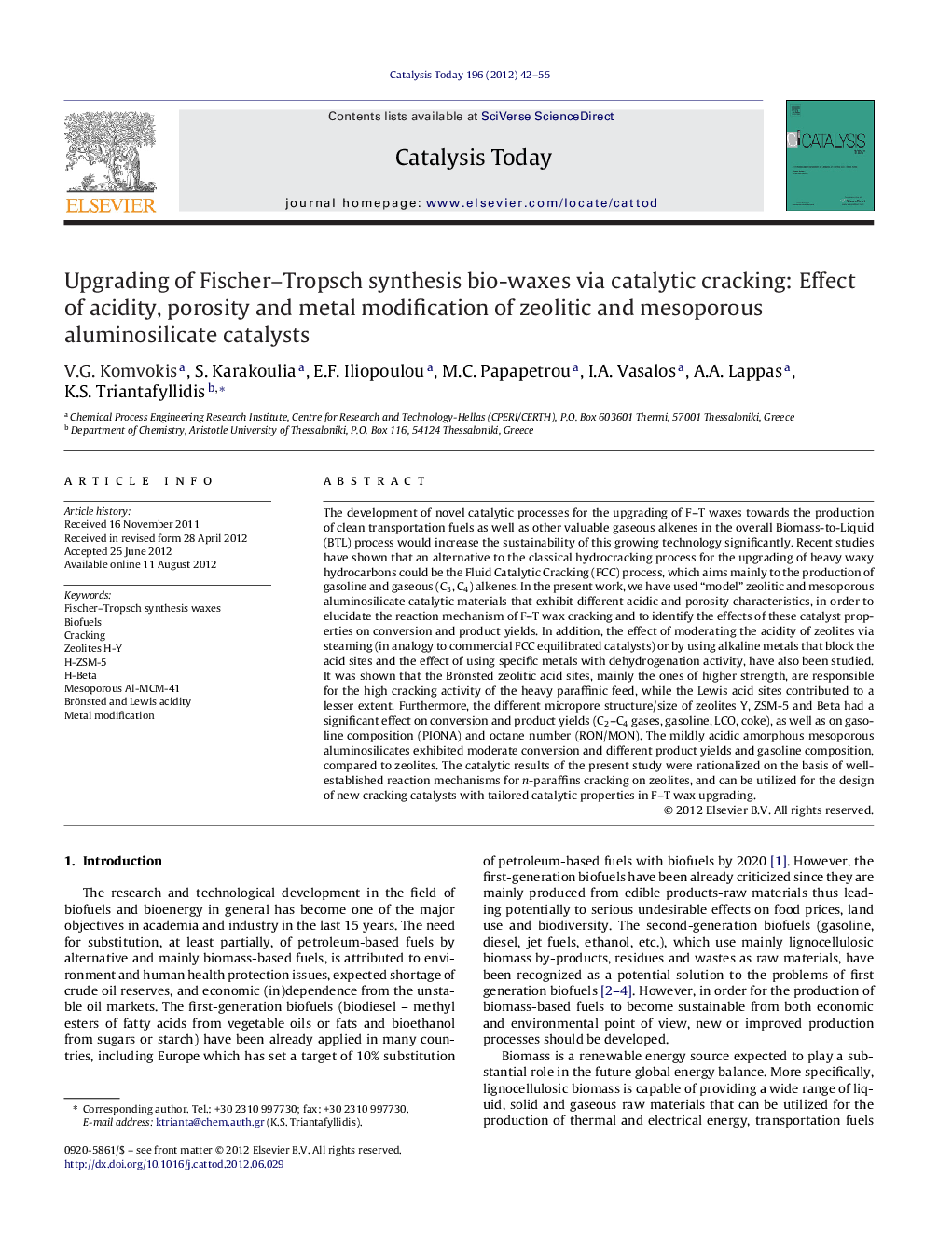| Article ID | Journal | Published Year | Pages | File Type |
|---|---|---|---|---|
| 55339 | Catalysis Today | 2012 | 14 Pages |
The development of novel catalytic processes for the upgrading of F–T waxes towards the production of clean transportation fuels as well as other valuable gaseous alkenes in the overall Biomass-to-Liquid (BTL) process would increase the sustainability of this growing technology significantly. Recent studies have shown that an alternative to the classical hydrocracking process for the upgrading of heavy waxy hydrocarbons could be the Fluid Catalytic Cracking (FCC) process, which aims mainly to the production of gasoline and gaseous (C3, C4) alkenes. In the present work, we have used “model” zeolitic and mesoporous aluminosilicate catalytic materials that exhibit different acidic and porosity characteristics, in order to elucidate the reaction mechanism of F–T wax cracking and to identify the effects of these catalyst properties on conversion and product yields. In addition, the effect of moderating the acidity of zeolites via steaming (in analogy to commercial FCC equilibrated catalysts) or by using alkaline metals that block the acid sites and the effect of using specific metals with dehydrogenation activity, have also been studied. It was shown that the Brönsted zeolitic acid sites, mainly the ones of higher strength, are responsible for the high cracking activity of the heavy paraffinic feed, while the Lewis acid sites contributed to a lesser extent. Furthermore, the different micropore structure/size of zeolites Y, ZSM-5 and Beta had a significant effect on conversion and product yields (C2–C4 gases, gasoline, LCO, coke), as well as on gasoline composition (PIONA) and octane number (RON/MON). The mildly acidic amorphous mesoporous aluminosilicates exhibited moderate conversion and different product yields and gasoline composition, compared to zeolites. The catalytic results of the present study were rationalized on the basis of well-established reaction mechanisms for n-paraffins cracking on zeolites, and can be utilized for the design of new cracking catalysts with tailored catalytic properties in F–T wax upgrading.
Graphical abstractFigure optionsDownload full-size imageDownload high-quality image (173 K)Download as PowerPoint slideHighlights► Catalytic cracking as an alternative process for F–T wax upgrading to clean transportation fuels in the BTL technology. ► Understanding of the fundamental cracking mechanisms by studying “model” zeolitic and mesoporous aluminosilicate catalysts. ► F–T wax is very reactive on zeolitic Brönsted acid sites, but not on Lewis sites of amorphous silica–alumina catalysts. ► The composition and octane number of gasoline can be optimized by tailoring catalyst's acidity, porosity and morphology. ► High propylene and butylene yields as well as light cycle oil (LCO) can also be obtained.
